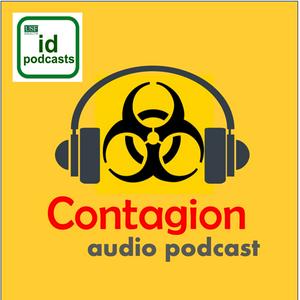Contagion Horizon: Future Pandemic Threats
In the Season one finale of our show, hosts Dr. Vivian Vega and Dr. Jackie Sherbuk reflect on the evolving landscape of infectious diseases and public health. Yet rather than linger on setbacks, they look ahead, posing the critical question: “What are the future pandemic threats?”To explore what transforms a simple pathogen into a global threat, they examine three key characteristics: transmission, virulence, and available countermeasures.Transmission, it turns out, must strike a delicate balance. A virus must spread efficiently—fast enough to infect large populations, but not so aggressively that it incapacitates or kills its host before passing to the next person. Similarly, a pathogen that is too virulent may burn out quickly, unable to spread widely before its hosts succumb. As for countermeasures, their availability and effectiveness vary. Influenza, for instance, can be treated with antivirals, while diseases like Nipah virus remain without effective therapies.At the time of this recording, H5N1 avian influenza stands out as a pressing concern. Dr. Vega reveals a startling fact: domestic cats may serve as an unexpected intermediary host, offering a new pathway for H5N1 to bridge the gap to humans. It’s a reminder of how creatively and unpredictably pathogens can bypass traditional barriers.Dr. Sherbuk turns to Ebola as a striking example of how sheer virulence can catapult a disease to global attention. Past outbreaks in Africa overwhelmed health systems, exploiting cultural practices like burial rituals to fuel its spread. Even the limited number of U.S. cases during the 2014 outbreak stirred widespread public fear, driven by the virus’s high mortality rate abroad.Not all dangerous pathogens are highly lethal. Some, like Zika virus, pose serious risks in specific populations—such as fetal abnormalities in pregnant women. Others, like HTLV-1, may cause chronic illnesses like leukemia and lymphoma.While many pathogens naturally evolve to become less lethal—thereby enhancing their chances of transmission—some mutate unpredictably, becoming more dangerous. This is the ongoing concern with influenza: a seemingly mild strain could shift into something far deadlier.The importance of countermeasures cannot be overstated. Yet in the aftermath of COVID-19, global readiness has been undermined by pandemic fatigue and the politicization of public health. Mistrust in vaccines, fractured health policy, and diminished international cooperation all threaten our capacity to respond to the next crisis.But what if the next pandemic comes from a direction we didn’t anticipate?Scientists have a name for this uncertainty: “Disease X.” The World Health Organization coined the term as a placeholder for the unknown. COVID-19 was once Disease X—until it had a name. The next one could emerge from zoonotic spillovers like HIV or Nipah, climate change, laboratory accidents, or even bioterrorism.Whatever its origin, our best defense lies in robust surveillance, scientific agility, and global collaboration. Because the question isn’t if Disease X will come—but whether we’ll be ready when it does.Dr Vega would like to thank her friend Job Meiller for his musical contribution to our segment breaks. Thank you Job!Thanks also to Dr. Ana Velez, our artistic contributor, for her painting, "The Multivirus Pandemic Explosion," used in our episode thumbnail.


